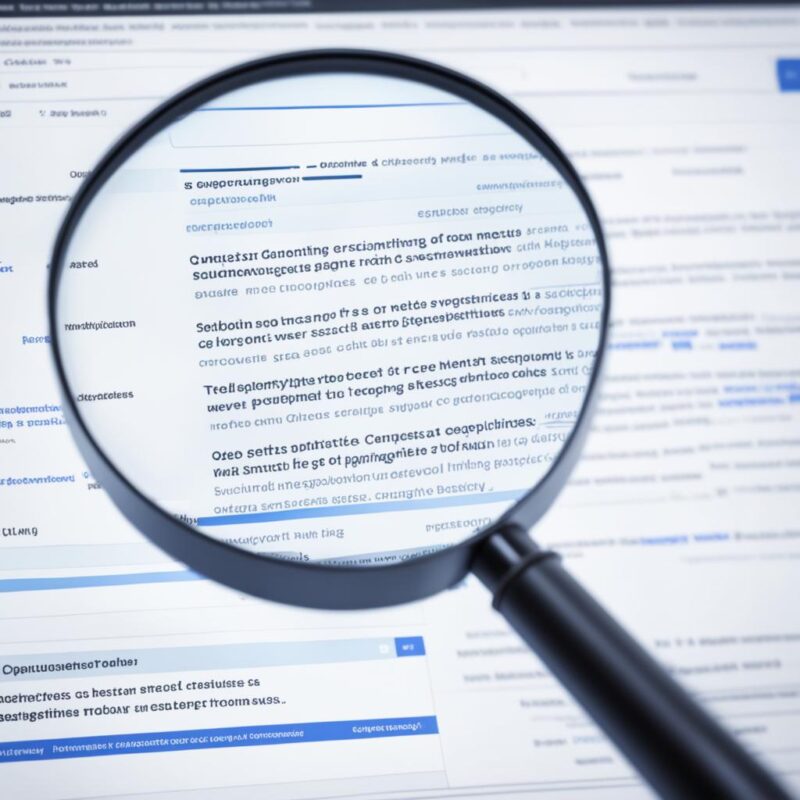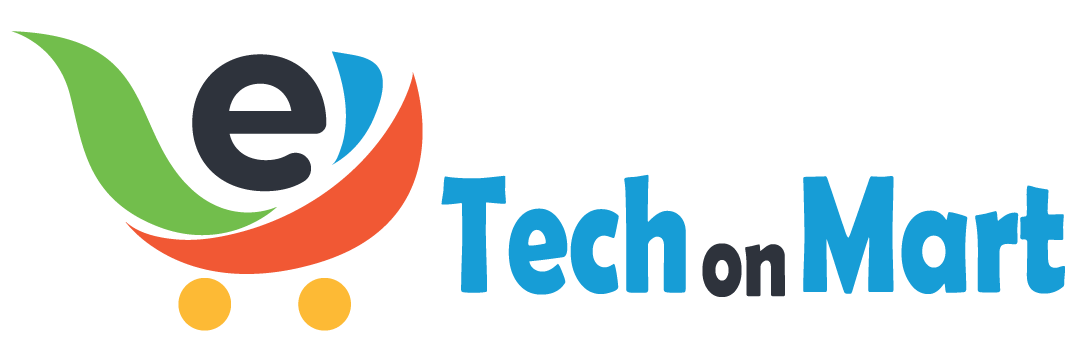When it comes to optimizing your website for search engines, there's one crucial element that often gets overlooked – meta tags. These HTML tags provide important information about your webpage's content to both search engines and users. But are you using them to their full potential?
Meta tags play a vital role in influencing how your website appears in search results, and can even impact your click-through rate (CTR). By optimizing your meta tags, you can increase your website's visibility and attract more organic traffic.
But what exactly are meta tags, and how can you optimize them? In this article, we'll dive deep into the world of meta tags, exploring best practices and providing examples along the way. From the meta description that entices users to click on your link, to the meta robots tag that controls how search engines crawl and index your page, we'll cover it all.
Are you ready to take your website's SEO to the next level? Let's get started with meta tags optimization!
Table of contents
Key Takeaways:
- Meta tags are HTML tags that provide information about your webpage's content to search engines and users.
- Optimizing your meta tags can improve your website's visibility in search results and increase your click-through rate.
- Key meta tags for SEO include the meta description, meta robots, meta viewport, and title tag.
- Keep your meta tags concise, accurate, and keyword-optimized for best results.
- Utilize tools like Semrush's On Page SEO Checker and Site Audit to ensure proper implementation of your meta tags.
Meta Description: A Brief Summary of Your Page
A meta description is a crucial component of your webpage that provides a concise summary of its content. It appears below the title in search results, giving users a preview of what the page offers. Although meta descriptions do not directly impact your rankings, a well-crafted and optimized meta description can significantly influence click-through rates (CTR).
Meta descriptions are essential for enticing users to click on your link, increasing the likelihood of website visits. By optimizing your meta description, you can enhance CTR and improve your overall online visibility. Here are some best practices for optimizing your meta description:
- Keep it under 150-160 characters: To ensure that your meta description appears in its entirety in search results, limit its length to approximately 150-160 characters. Longer descriptions may get truncated, diminishing their effectiveness.
- Include relevant keywords: Incorporate keywords in your meta description that accurately represent the content and topic of your page. This will help search engines understand the relevance of your webpage and attract the attention of users searching for those keywords.
- Accurately describe your page's content: Ensure that your meta description provides an accurate and concise summary of what users can expect to find on your webpage. Avoid misleading descriptions that may disappoint or mislead users.
Remember, meta descriptions serve as a compelling snippet that entices users to click on your link. By following these best practices and optimizing your meta description, you can enhance your CTR and drive more traffic to your website.

Remember, a well-written and keyword-optimized meta description isn't just about gaining visibility in search results. It's also about compelling users to click on your link, ultimately driving more organic traffic to your website.
Importance of Meta Description Optimization
Meta description optimization plays a vital role in improving your website's online visibility and attracting organic traffic. Here's why it's crucial:
- Click-Through Rate (CTR) Boost: A well-optimized meta description can improve your CTR by enticing users to click on your link. It's your chance to make a compelling first impression and convince users that your webpage offers the information they're seeking.
- Enhanced User Experience: An accurately written meta description provides users with a clear understanding of your webpage's content. This helps them determine if it aligns with their needs, improving the overall user experience and reducing bounce rates.
- Increased Search Engine Visibility: While meta descriptions do not impact rankings directly, they contribute to higher search engine visibility by encouraging users to click on your link. Higher CTRs can indirectly improve your website's organic rankings.
To ensure optimal results, it's important to continuously monitor and refine your meta descriptions. Testing different descriptions, analyzing user engagement metrics, and making data-driven adjustments can help you achieve the best outcomes.
Meta Robots: Controlling Search Engine Crawling and Indexing
Meta tags play a crucial role in optimizing your website for search engines. While meta description and meta viewport tags are commonly known, the meta robots tag is equally important but often overlooked. This tag allows you to control how search engines crawl and index your pages, giving you more control over your website's visibility in search results.
By default, search engines will index and follow the links on your pages, ensuring that your site appears in search results and that search engines can crawl all the relevant pages. However, there may be instances where you want to specify different instructions for search engine bots. This is where the meta robots tag comes in.
The meta robots tag consists of different values that provide instructions to search engines. It can be used to indicate whether a page should be indexed or not, and whether the links on the page should be followed or not. The two main values of the meta robots tag are:
- Index: This value tells search engines to index the page. It is the default value.
- Noindex: This value tells search engines not to include the page in their index.
Additionally, the meta robots tag can also include values for following or not following links on the page:
- Follow: This value allows search engines to crawl the links on the page.
- Nofollow: This value instructs search engines not to follow the links.
It's important to use these values appropriately based on your website's requirements. For example, you may want to use the noindex value on pages that have duplicate content or are not relevant to search results. However, be cautious when using the nofollow value, as it should generally be reserved for external links, not internal ones.
To better understand how the meta robots tag works, here's an example:
<meta name=”robots” content=”noindex, nofollow”>
This tag tells search engines not to index the page and not to follow the links on it. It can be added to the <head> section of your HTML code for each individual page, giving you granular control over search engine indexing and crawling.

By utilizing the meta robots tag effectively, you can shape how search engines perceive and prioritize your website's content. Follow the best practices when using meta robots tags to ensure that search engines correctly crawl and index your pages, ultimately improving your website's visibility in search results.
Meta Viewport: Optimizing Your Website for Mobile Devices
In today's mobile-centric world, it's crucial to optimize your website for mobile devices. One effective way to achieve this is by utilizing the meta viewport tag. This tag allows you to control how your webpage is displayed on different mobile devices.
The meta viewport tag adjusts the width and scaling of the viewport, ensuring that your website provides an optimal viewing experience for users. This is particularly important as Google takes mobile-friendliness into consideration when determining search rankings.
To ensure that your meta viewport is optimized, simply add the tag to your webpages with the following attributes:
width=device-width, initial-scale=1.0
By including these attributes in your meta viewport tag, you guarantee that your website is responsive and displays correctly on various mobile devices and screen sizes.
| Meta Viewport Best Practices |
|---|
Use the width=device-width attribute to ensure the viewport adjusts based on the device's screen width |
Set the initial scale with initial-scale=1.0 to prevent automatic zooming on mobile devices |
| Avoid using fixed-width values in the meta viewport tag, as this may result in a poor user experience on different devices |
| Test your website's responsiveness on various mobile devices to ensure optimal display |
By following these best practices, you can optimize your website for mobile devices and enhance the overall user experience. Implementing a well-optimized meta viewport will not only improve user satisfaction but also positively impact your search engine rankings.
Image: Visual representation of a responsive website on different mobile devices.
Title Tag: The First Impression of Your Page
The title tag is one of the most important elements for SEO and plays a crucial role in attracting users to click on your webpage in search results. The title tag appears as the clickable headline that represents your page in search engine listings. It's your first opportunity to make a positive impression and engage searchers.
To optimize your title tag for search engines and users, it's important to follow these best practices:
- Create a unique and descriptive title that accurately reflects the content of your page. This helps both search engines and users understand what your page is about.
- Keep your title tag under 60 characters to ensure it fully displays in search results without being cut off. Longer titles may be truncated, leading to a loss of important information.
- Include your target keyword naturally within the title tag to provide further context to search engines and improve relevancy.
- Avoid using clickbait titles or misleading statements that may disappoint users when they visit your page.
- Avoid using generic titles that do not effectively convey the unique value of your content.
- Ensure that each page on your website has a unique title tag. Duplicate titles can confuse search engines and may negatively impact your rankings.
An example of a well-optimized title tag for a blog about hiking in national parks could be:
Hiking in National Parks: Discover the Beauty of Nature – YourBlog
By following these title tag best practices, you can create compelling and informative titles that not only improve your search engine rankings but also entice users to click through to your webpage.
Title Tag Best Practices
| Best Practices | Explanation |
|---|---|
| Create a unique and descriptive title | Help search engines and users understand the content of your page |
| Keep the title tag under 60 characters | Ensure full display in search results and avoid truncation |
| Include your target keyword naturally | Provide search engines with additional context and improve relevancy |
| Avoid clickbait or misleading titles | Build trust and deliver on user expectations |
| Avoid generic titles | Highlight the unique value of your content |
| Ensure each page has a unique title | Avoid confusion and improve search engine understanding |
Conclusion
Optimizing your meta tags is an essential aspect of on-page optimization that can significantly impact your website's visibility in search results. By focusing on meta tags such as the meta description, meta robots, meta viewport, and title tag, you can enhance your website's performance and drive more organic traffic.
When optimizing your meta tags, it's important to adhere to best practices. Keep your meta tags concise and accurate, providing a clear and compelling summary of your page's content. Additionally, ensure that your meta tags are keyword-optimized, as this helps search engines understand the relevance of your webpage.
To streamline the meta tag optimization process, you can leverage powerful tools like Semrush's On Page SEO Checker and Site Audit. These tools offer valuable insights and recommendations to help you implement meta tags correctly and effectively.
Start optimizing your meta tags today to elevate your website's search engine rankings, attract more organic traffic, and boost your overall SEO performance.
FAQ
Meta tags are HTML tags that provide information about a webpage's content to search engines and users. They play a crucial role in influencing how a website appears in search results and can impact click-through rate (CTR).
The most relevant meta tags for SEO are the meta description, meta robots, meta viewport, and title tag.
The meta description is a short summary of the webpage that appears below the title in search results. While it does not directly affect rankings, a well-written and keyword-optimized meta description can improve click-through rate (CTR).
To optimize your meta description, keep it under 150-160 characters, include relevant keywords, and accurately describe the content of the page. Avoid keyword stuffing and duplicate meta descriptions on your website.
The meta robots tag controls how search engines crawl and index your pages. It allows you to specify instructions like indexing, noindexing, following, and nofollowing.
Use the meta robots tag appropriately by using values like index, noindex, follow, and nofollow. Avoid using the nofollow value on internal links.
The meta viewport tag controls how your webpage is displayed on mobile devices. It adjusts the width and scaling of the viewport to provide an optimal viewing experience.
To optimize your meta viewport, add the tag to your webpages with the attributes “width=device-width, initial-scale=1.0”. This ensures that your website is responsive and displays correctly on different devices.
The title tag is the clickable headline of a webpage in search results. It helps search engines understand the topic of the page and can impact rankings.
To optimize your title tag, create a unique and descriptive title that accurately reflects the content of the page. Keep the title under 60 characters and include your target keyword. Avoid clickbait titles, generic titles, and duplicate titles on your website.
Meta tags are an important element of on-page optimization. By optimizing meta tags such as the meta description, meta robots, meta viewport, and title tag, you can improve your website's visibility in search results and drive more organic traffic.





